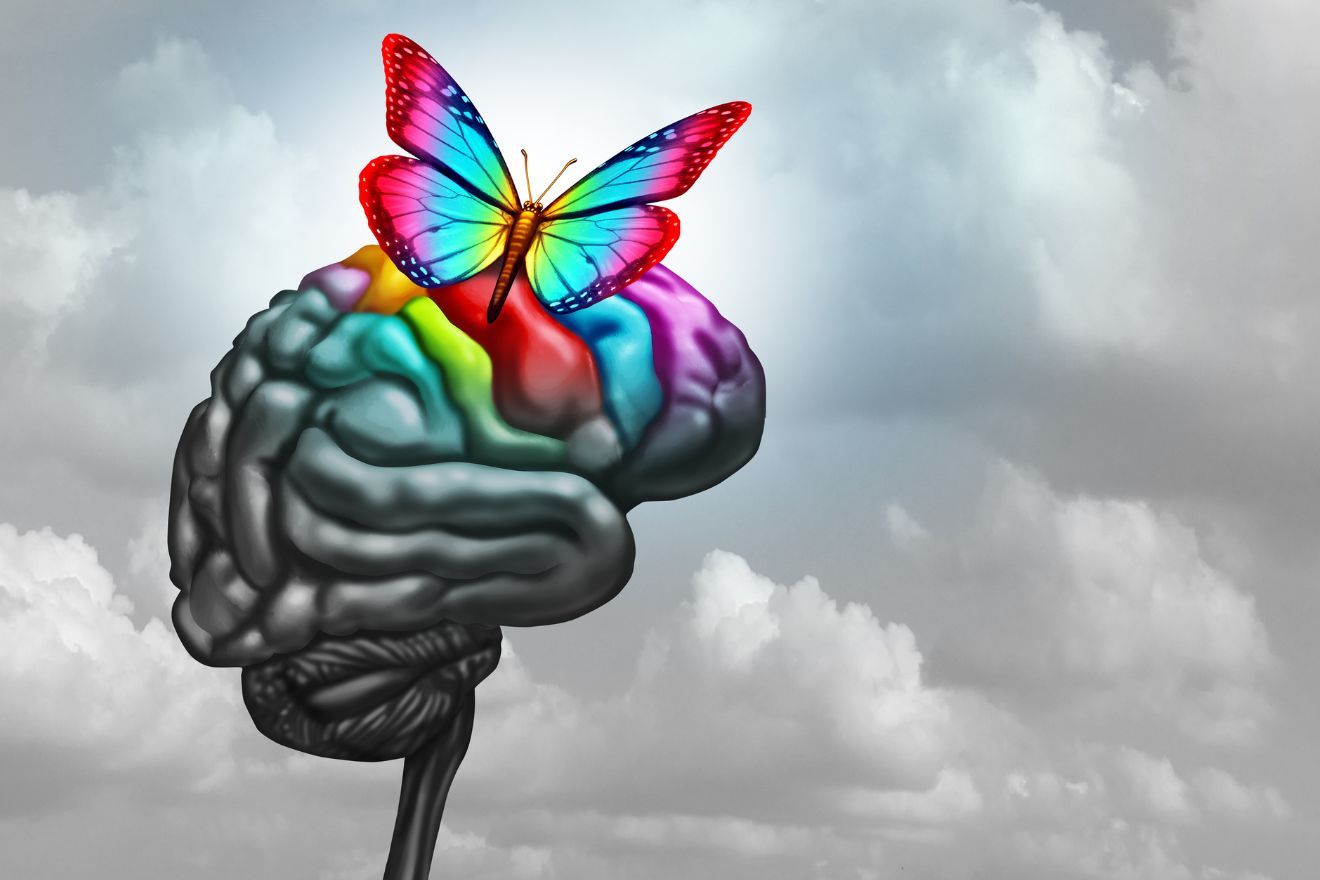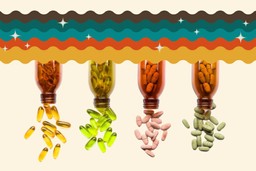3,4-methylenedioxy-methamphetamine (MDMA) can be a powerful, life-changing cure for post-traumatic stress disorder (PTSD) and other treatment-resistant conditions. The medicine isn’t fool-proof, however: MDMA comes with some health risks.
Depending on the dose, purity of the substance, and frequency of dosing, MDMA can be neurotoxic, meaning it is harmful to the cells of the nervous system. Specifically, studies have found that high doses of MDMA given to rodents can damage the nerve cells (neurons) that release the feel-good neurotransmitter serotonin. While the flood of serotonin that happens during an MDMA trip is, in part, what makes it such a potent medicine, the drop in serotonin levels after the trip can make us feel down, tired, depressed, or flu-like in the days that follow.
The exact causes of MDMA’s neurotoxicity are still being researched. One theory is that MDMA creates unstable molecules known as free radicals. Oxidation caused by free radicals can injure our cells and even damage our DNA. Over time, oxidative stress increases the risk of numerous chronic health issues.
Supplements to Reduce Side Effects of MDMA
Thankfully, certain types of nutrients might help offset the oxidative stress associated with MDMA. Aptly named “antioxidants,” these nutrients fight oxidation in the body. Popular antioxidants you can find in the grocery store include green tea, berries, walnuts, and dark chocolate.
When it comes to oxidation associated with MDMA, the antioxidants alpha lipoic acid, acetyl-L-carnitine, N-acetyl cysteine, and ascorbic acid may be worth supplementing. Let’s take a closer look at some of the research.
Alpha Lipoic Acid
Alpha lipoic acid (also written as α-lipoic acid, or abbreviated ALA) was shown in a study from 1999 to protect against the neurotoxic effects of MDMA. One week after receiving MDMA, the rats in this study were killed and their brains were examined. The rats that took MDMA (without ALA) were found to have 40 to 60% less serotonin in their brains than the rats who didn’t get MDMA. The brains of the rats that took MDMA and ALA, however, were normal. In other words, the ALA completely prevented any deficits in brain serotonin and neutralized any harm caused by the MDMA.
Acetyl-L-Carnitine
A study on acetyl-L-carnitine (ALC) likewise yielded promising outcomes. In this study, the researchers split the rats into four groups: One group of rats received a saline solution, another received just MDMA, a third group received MDMA with ALC, and the fourth group received ALC alone. (The MDMA+ALC group of rats were “pre-treated” with ALC three hours prior to receiving MDMA. They then received ALC “boosters” one and five hours after the MDMA dose.) All of the rats were killed two weeks later, and their brains were examined. When studying the rats’ brains, the researchers specifically zoomed in on the mitochondria – the part of every cell that creates energy.
The brains of the rats that received only MDMA were found to have significant evidence of neurotoxicity and mitochondrial damage. The rats that received MDMA with ALC, however, were spared these negative effects. The rats that received MDMA with ALC also had higher levels of serotonin in various brain regions two weeks later than the rats who received MDMA alone. The study authors conclude that “pre-treatment with ALC exerts effective neuroprotection against the MDMA-induced neurotoxicity at the mitochondrial level.” In short: ALC shielded the brain, its cells, and its organelles against MDMA-related injury.
N-Acetyl Cysteine
Serotonin plays an important role in our ability to regulate body temperature. MDMA’s effects on serotonin levels, therefore, may explain the drug’s tendency to abnormally raise body temperature (cause hyperthermia). In fact, hyperthermia is another proposed mechanism by which MDMA causes neurotoxicity.
In the above-mentioned studies, however, neither ALA nor ALC protected against MDMA-related hyperthermia. Fortunately, the antioxidant N-acetyl cysteine (NAC) might be able to do what ALA and ALC cannot. NAC is a precursor to a very important antioxidant known as glutathione. And it might just prevent MDMA-induced hyperthermia.
In yet another rat study, the animals were given various doses of MDMA plus NAC or MDMA plus saline (salty water). The researchers found that NAC was not only able to reduce the signs of neurotoxicity in the rats’ brains but that it also prevented MDMA-associated hyperthermia. (This was measured by rectal thermometers, which I can only imagine were hilariously tiny.) Prior to being killed, the rats were also placed in a maze so that their memory could be assessed. The rats treated with NAC had fewer issues with memory after taking MDMA than the rats that got MDMA without NAC.
Ascorbic Acid
There have also been at least two studies exploring the potential of ascorbic acid (vitamin C) to protect the brain from some of MDMA’s neurotoxic effects. One study found that vitamin C (250mg/kg) given five hours after MDMA conserved the rats’ ability to make energy in the mitochondria of their cells, and prevented a dip in brain serotonin levels. (Curiously, the study didn’t find much benefit from dosing the vitamin C any sooner than five hours after the MDMA.) Another study found that vitamin C given before MDMA reduced the risk of hyperthermia and protected against the dip in serotonin levels typically seen after using MDMA.
Vitamin C is one of the most under-celebrated antioxidants. Widely available and affordable, vitamin C may even help protect the brain against certain aspects of opioid addiction.
The Brain Needs Help to Bounce Back
The harmful brain changes associated with MDMA in these studies were observed well after the fact – at one and two weeks after MDMA use. Granted, the rat brain is different than the human brain, but these studies nevertheless show us that neurotoxicity isn’t something that we necessarily bounce back from after just one or two nights of rest. In fact, other studies have shown that MDMA-related harm can linger in both animals and humans.
This risk is especially high in women, as a study of ravers in Amsterdam found that women might be more susceptible than men to the neurotoxic effects of MDMA. (This study confirmed similar findings from a study comparing the neurotoxicity from MDMA in female and male rats.) Teenagers may also be at increased risk of MDMA-related neurotoxicity, as at least two rat studies have suggested.
Although the brain can likely bounce back after using MDMA in a therapeutic context, chronic MDMA use comes with more serious risks. A study of people who regularly use (or used) MDMA in recreational contexts illuminates the long-term risks of habitual MDMA use. This study considered people who regularly use “ecstasy” (street MDMA), as well as former ecstasy users who hadn’t touched the drug in two years. Although certain problems were more pronounced in the currently-using-ecstasy group, both the current and past ecstasy users had issues with working memory, verbal recall, and impulsivity when compared to those who hadn’t ever taken the drug. The study confirms previous research suggesting that habitual use of ecstasy may cause long-term cognitive and psychiatric issues.
The authors conclude: “…impairments of neuropsychological performance associated with regular ecstasy use are not reversed by prolonged abstinence. This is consistent with evidence that ecstasy has potent and selective neurotoxic effects on brain serotonergic systems in humans” [emphases added by me].
However, a meta-analysis of 16 studies of Ecstasy users compared to controls showed decreased levels of the serotonin reuptake transporter (SERT), the primary receptor that MDMA binds to in the brain. There was an association of time since last use, but not with lifetime occasions of Ecstasy use. These findings suggest that changes in SERT levels may be reversible over time, and other variables, such as a number of doses taken per occasion, may play a role in the degree of changes in SERT levels.
In summary: taking ecstasy too many times can potentially change your brain for the worse, and it is unclear if those changes will resolve on their own.
How to Have a Happy Brain After MDMA
Like other drugs, it’s best to use the lowest dose of MDMA possible to achieve the desired effect.
As with any medicine, the risks of MDMA must be weighed against the benefits. For individuals seeking to overcome post-traumatic stress disorder (PTSD), repair their marriage, or otherwise learn, grow, and heal, the risk of side effects that come with a limited number of MDMA-assisted psychotherapy sessions may very well be worth the risk. Using some over-the-counter antioxidants may significantly reduce that risk or even shrink it to zero.
Some scientific evidence suggests that we can minimize the risk of side effects from MDMA by taking antioxidant supplements. Based on the data, possible supplement regimens to accompany MDMA sessions could include any combination of the following:
- Alpha lipoic acid (ALA): 300 milligrams (mg) of ALA at the same time as MDMA, followed by 100 – 150 mg of ALA every 1-2 hours thereafter for the duration of the trip. (Conservative practitioners suggest a maximum dose of 2,400 mg of ALA in a 24-hour period.)
- Acetyl-L carnitine (ALC): 500 mg of ALC three hours before taking MDMA, 500mg one hour after the MDMA, and 500 mg four hours later (five hours after the MDMA), for a total dose of 1,500 mg of ALC. (Conservative practitioners suggest a maximum dose of 2,500mg of ALC per 24-hour period.)
- N-acetyl cysteine (NAC): 900 mg of NAC on an empty stomach, shortly before the MDMA and again at the end of the session.
- Vitamin C: 500 – 2,000 mg (half a gram – 2 grams) of sodium ascorbate every two hours the day of the MDMA session. (Sodium ascorbate is a form of vitamin C that’s less likely to cause an upset stomach than regular ascorbic acid.) Reduce the dose if loose stools occur.
Other powerful antioxidants may also be helpful. Because they have not yet been studied in the context of MDMA use, however, we cannot guarantee that they’re safe to combine with MDMA. Nevertheless, these supplements all have pretty good safety profiles:
- Green tea extract
- Glutathione
- Vinpocetine
- Sulforaphane
- Milk thistle
- Eating antioxidant-rich foods, like blackberries, blueberries, walnuts, artichokes, and dark chocolate
- Ginkgo biloba
- Olive leaf extract
- Taking a powdered greens supplement
- Melatonin – Note: some folks say not to take melatonin the same day as an MDMA trip. To play it safe, wait 24 hours.
Minimizing Oxidative Stress Associated With MDMA
Drawing on common sense, it also seems intuitive to avoid other activities and substances that cause oxidative stress when planning an MDMA trip. This includes avoiding alcohol-containing beverages, cigarettes (and second-hand cigarette smoke), and foods made with refined sugars or heavily processed ingredients. It also means avoiding settings where there may be high radiation, chemicals, or poor air quality. As infections also cause oxidation in the body, it may be helpful to reschedule any MDMA sessions if you have a cold, flu, herpes outbreak, unexplained fever, or other signs of infection. It can also be a good idea to avoid getting a vaccine the same week as doing an MDMA session.
The over-the-counter pain reliever acetaminophen – sold under the brand name Tylenol in the USA and known as paracetamol in other countries – is well known to deplete the body’s stores of an important antioxidant known as glutathione. For this reason, it’s probably a good idea to avoid combining acetaminophen with MDMA or to be sure to take some N-acetyl cysteine or glutathione if you do.
It’s also generally recommended to stay hydrated during the experience – without drinking too much water. Because of the effects that MDMA can have on anti-diuretic hormone (ADH) levels in the body, I typically recommend that folks keep their water intake to under 3 liters of electrolyte-enhanced water.
What About 5-HTP?
People often ask about using 5-HTP to help the brain “bounce back” after an MDMA experience. Because 5-HTP is a precursor to serotonin (5-HT), a 5-HTP supplement can give the body more of the “building blocks” it needs to replenish its serotonin stores.
The risk with 5-HTP supplements, however, is that they can actually work at increasing serotonin levels. Taking 5-HTP too soon after MDMA can cause a serious and potentially life-threatening condition known as serotonin syndrome. (The same goes for combining 5-HTP with SSRI antidepressants.) For that reason, I typically recommend that people wait 48 hours after taking MDMA before starting a 5-HTP supplement. In my medical practice, I usually advise my patients to use 5-HTP at a dose of 100 to 400 mg daily for two weeks after taking MDMA, starting two days after the MDMA experience.
Based on the data available, it’s likely to be helpful (and unlikely to cause harm) to take antioxidant supplements to support and protect the nervous system before, during, and even after an MDMA experience.
Follow your Curiosity
Sign up to receive our free psychedelic courses, 45 page eBook, and special offers delivered to your inbox.References
- Aguirre, N., Barrionuevo, M., Ramírez, M. J., Del Río, J., & Lasheras, B. (1999). Alpha-lipoic acid prevents 3,4-methylenedioxy-methamphetamine (MDMA)-induced
- Alves, E., Summavielle, T., Alves, C. J., Custódio, J. B., Fernandes, E., de Lourdes Bastos, M., Tavares, M. A., & Carvalho, F. (2009). Ecstasy-induced oxidative stress to adolescent rat brain mitochondria in vivo: influence of monoamine oxidase type A. Addiction biology, 14(2), 185–193. https://doi.org/10.1111/j.1369-1600.2008.00143.xneurotoxicity. Neuroreport, 10(17), 3675–3680. https://doi.org/10.1097/00001756-199911260-00039
- Alves, E., Binienda, Z., Carvalho, F., Alves, C. J., Fernandes, E., de Lourdes Bastos, M., Tavares, M. A., & Summavielle, T. (2009). Acetyl-L-carnitine provides effective in vivo neuroprotection over 3,4-methylenedioximethamphetamine-induced mitochondrial neurotoxicity in the adolescent rat brain. Neuroscience, 158(2), 514–523. https://doi.org/10.1016/j.neuroscience.2008.10.041
- Baggott, M. J., Garrison, K. J., Coyle, J. R., Galloway, G. P., Barnes, A. J., Huestis, M. A., & Mendelson, J. E. (2016). MDMA Impairs Response to Water Intake in Healthy Volunteers. Advances in pharmacological sciences, 2016, 2175896. https://doi.org/10.1155/2016/2175896
- Bird, C. I. V., Modlin, N. L., & Rucker, J. J. H. (2021). Psilocybin and MDMA for the treatment of trauma-related psychopathology. International review of psychiatry (Abingdon, England), 33(3), 229–249. https://doi.org/10.1080/09540261.2021.1919062
- Birdsall T. C. (1998). 5-Hydroxytryptophan: a clinically-effective serotonin precursor. Alternative medicine review: a journal of clinical therapeutic, 3(4), 271–280.
- Bosch, O. G., Wagner, M., Jessen, F., Kühn, K. U., Joe, A., Seifritz, E., Maier, W., Biersack, H. J., & Quednow, B. B. (2013). Verbal memory deficits are correlated with prefrontal hypometabolism in (18)FDG PET of recreational MDMA users. PloS one, 8(4), e61234. https://doi.org/10.1371/journal.pone.0061234
- Burgunder, J. M., Varriale, A., & Lauterburg, B. H. (1989). Effect of N-acetylcysteine on plasma cysteine and glutathione following paracetamol administration. European journal of clinical pharmacology, 36(2), 127–131. https://doi.org/10.1007/BF00609183
- Chitre, N. M., Bagwell, M. S., & Murnane, K. S. (2020). The acute toxic and neurotoxic effects of 3,4-methylenedioxymethamphetamine are more pronounced in adolescent than adult mice. Behavioural brain research, 380, 112413. https://doi.org/10.1016/j.bbr.2019.112413
- Colbert, R., & Hughes, S. (2022). Evenings with Molly: Adult Couples’ Use of MDMA for Relationship Enhancement. Culture, medicine and psychiatry, 10.1007/s11013-021-09764-z. Advance online publication. https://doi.org/10.1007/s11013-021-09764-z
- Gouzoulis-Mayfrank, E., & Daumann, J. (2006). Neurotoxicity of methylenedioxyamphetamines (MDMA; ecstasy) in humans: how strong is the evidence for persistent brain damage?. Addiction (Abingdon, England), 101(3), 348–361. https://doi.org/10.1111/j.1360-0443.2006.01314.x
- Karlsen, S. N., Spigset, O., & Slørdal, L. (2008). The dark side of ecstasy: neuropsychiatric symptoms after exposure to 3,4-methylenedioxymethamphetamine. Basic & clinical pharmacology & toxicology, 102(1), 15–24. https://doi.org/10.1111/j.1742-7843.2007.00159.x
- Li, S. X., Sun, A. M., Wang, X., Li, J., Peng, Z. G., Kuang, W. H., & Huang, M. S. (2006). Sichuan da xue xue bao. Yi xue ban = Journal of Sichuan University. Medical science edition, 37(2), 191–195.
- Mills, E. M., Rusyniak, D. E., & Sprague, J. E. (2004). The role of the sympathetic nervous system and uncoupling proteins in the thermogenesis induced by 3,4-methylenedioxymethamphetamine. Journal of molecular medicine (Berlin, Germany), 82(12), 787–799. https://doi.org/10.1007/s00109-004-0591-7
- Mitchell, J. M., Bogenschutz, M., Lilienstein, A., Harrison, C., Kleiman, S., Parker-Guilbert, K., Ot’alora G, M., Garas, W., Paleos, C., Gorman, I., Nicholas, C., Mithoefer, M., Carlin, S., Poulter, B., Mithoefer, A., Quevedo, S., Wells, G., Klaire, S. S., van der Kolk, B., Tzarfaty, K., … Doblin, R. (2021). MDMA-assisted therapy for severe PTSD: a randomized, double-blind, placebo-controlled phase 3 study. Nature medicine, 27(6), 1025–1033. https://doi.org/10.1038/s41591-021-01336-3
- Morgan, M. J., McFie, L., Fleetwood, H., & Robinson, J. A. (2002). Ecstasy (MDMA): are the psychological problems associated with its use reversed by prolonged abstinence?. Psychopharmacology, 159(3), 294–303. https://doi.org/10.1007/s002130100907
- Müller, F., Brändle, R., Liechti, M. E., & Borgwardt, S. (2019). Neuroimaging of chronic MDMA (“ecstasy”) effects: A meta-analysis. Neuroscience & Biobehavioral Reviews, 96, 10-20.
- Pedersen, N. P., & Blessing, W. W. (2001). Cutaneous vasoconstriction contributes to hyperthermia induced by 3,4-methylenedioxymethamphetamine (ecstasy) in conscious rabbits. The Journal of neuroscience: the official journal of the Society for Neuroscience, 21(21), 8648–8654. https://doi.org/10.1523/JNEUROSCI.21-21-08648.2001
- Reneman, L., Booij, J., de Bruin, K., Reitsma, J. B., de Wolff, F. A., Gunning, W. B., den Heeten, G. J., & van den Brink, W. (2001). Effects of dose, sex, and long-term abstention from use on toxic effects of MDMA (ecstasy) on brain serotonin neurons. Lancet (London, England), 358(9296), 1864–1869. https://doi.org/10.1016/S0140-6736(01)06888-X
- Rousar, T., Pařík, P., Kucera, O., Bartos, M., & Červinková, Z. (2010). Glutathione reductase is inhibited by acetaminophen-glutathione conjugate in vitro. Physiological research, 59(2), 225–232. https://doi.org/10.33549/physiolres.931744
- Sarkar, S., & Schmued, L. (2010). Neurotoxicity of ecstasy (MDMA): an overview. Current pharmaceutical biotechnology, 11(5), 460–469. https://doi.org/10.2174/138920110791591490
- Shankaran, M., Yamamoto, B. K., & Gudelsky, G. A. (2001). Ascorbic acid prevents 3,4-methylenedioxymethamphetamine (MDMA)-induced hydroxyl radical formation and the behavioral and neurochemical consequences of the depletion of brain 5-HT. Synapse (New York, N.Y.), 40(1), 55–64. https://doi.org/10.1002/1098-2396(200104)40:1<55::AID-SYN1026>3.0.CO;2-O
- Soleimani Asl, S., Mousavizadeh, K., Pourheydar, B., Soleimani, M., Rahbar, E., & Mehdizadeh, M. (2013). Protective effects of N-acetylcysteine on 3, 4-methylenedioxymethamphetamine-induced neurotoxicity in male Sprague-Dawley rats. Metabolic brain disease, 28(4), 677–686. https://doi.org/10.1007/s11011-013-9423-1
- Zelfand E. (2020). Vitamin C, Pain, and Opioid Use Disorder. Integrative medicine (Encinitas, Calif.), 19(3), 18–29.








